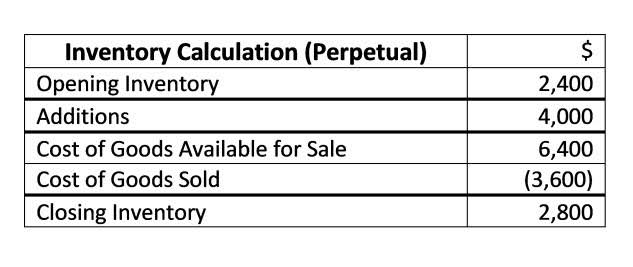
While these are the most prominent ones, companies also prepare the cash flow statement and statement of changes in equity. The occurrence assertion is used to determine whether the transactions recorded on financial statements have taken place. This can range from verifying that a bank deposit has been completed to authenticating accounts receivable balances by determining whether a sale took place on the day specified. When financial statements are prepared, the preparer is asserting the fundamental accuracy of those statements. Learn what the various audit assertions are and how they can impact your business.
Are management assertion and audit assertion the same?
A lot of work is required for an organization to support the assertions that a management team makes. Often controls related to financial reporting extend beyond the immediate company to service organizations supporting its operations. Financial audits are a critical component of corporate governance, providing stakeholders with assurance about the accuracy of a company’s financial statements. Central to this process are management assertions—claims made by an organization’s executives regarding the financial data they present.

What Are Accounting Management Assertions?
Auditors may also look for any deposits in the bank that have not been recorded. For example, an auditor may want to examine payroll records to make sure that all salaries and wages expenses have been recorded in the proper period. This may include an examination of payroll records, a payroll journal, an active employee list, and any payroll accruals that were made and reversed in the period being examined. Management assertions and audit assertions are related concepts, but they are not the same thing. In this article, we will discuss the nature and the usage of each assertion as well as how important it is for management and auditors.
Assertions related to Assets, Liabilities, and Equity Balances at the period end:
Information related to the assertions is found on corporate balance sheets, income statements, and cash flow statements. There are five assertions, including accuracy and valuation, existence, completeness, rights and obligations, and presentation and disclosure. Audit assertions are implied or expressed representations by management about classes of transactions and the related accounts and disclosures in the financial statements. Relevant tests – auditors often use disclosure checklists to ensure that financial statement presentation complies with accounting standards and relevant legislation.

There are generally five accounting assertions that the preparers of financial statements make. They are accuracy and valuation, existence, completeness, rights and obligations, and presentation and disclosure. There are five different financial statement assertions attested to by a company’s statement preparer.
Account Balance Assertions:
- This judgment is based on the auditor’s experience, the nature of the financial statement item, and the circumstances under which the evidence is obtained.
- When performing an audit, it is the auditor’s job to obtain the necessary evidence to verify the assertions made in the financial statements.
- Rights and obligations assertions are used to determine that the assets, liabilities, and equity represented in the financial statements are the property of the business being audited.
- It is the third assertion type that can fall under both transaction-level assertions and account balance assertions.
- The description is based on the AICPA criteria listed in Section 200 of the Description Criteria for a Description of a Service Organization’s System in a SOC 2 Report document.
The Sarbanes-Oxley Act (SOX), issued in 2002, added additional responsibility to the management of publicly traded companies. Management of these corporations was now required to assess and assert as to the effectiveness of the organization’s internal controls over financial reporting. Consequently, in addition to assessing management assertion the presentation of an organization’s financial statements, auditors must evaluate the internal controls within the processes that could materially impact the financial statements. Financial statement assertions are claims made by companies that attest that the information on their financial statements is true and accurate.
- Salaries and wages cost in respect of all personnel have been fully accounted for.
- Furthermore, the historical accuracy of management’s assertions plays a role in their current validity.
- The implicit or explicit claims by the management on the preparation and appropriateness of financial statements and disclosures are known as management assertions.
- There, it relates to whether companies have classified and presented transactions fairly.
- While audit assertions apply to the balance sheet and income statement, they may have a wider scope.
Audits don’t have to be scary
While audit assertions apply to the balance sheet and income statement, they may have a wider scope. Similarly, they help auditors assess if financial statements present a true and fair view. Auditors use audit assertions as guides to help guide their audit process.


Valuation and allocation assertions pertain to the appropriate valuation of assets and liabilities and the correct allocation of revenues and expenses. Auditors evaluate these assertions by inspecting physical assets, confirming balances with third parties, assessing valuation models, and analyzing liabilities to confirm their existence and valuation at the balance sheet date. Management assertions are implied or expressed representations by management about classes of transactions and the related accounts and disclosures in the financial statements. Asserts that cash of $827,568 was present in the company’s bank accounts as of the balance sheet date.
Transaction-Level Assertions
In other words, if your small business is being audited, the auditor may ask for proof that the cash balance of your bank account belongs to the business. Assertions assist auditors in considering a wide range of issues that are relevant to the authenticity of financial statements. The consideration of management assertions during the various stages of audit helps to reduce the audit risk. The assertion of rights and obligations is a basic assertion that all assets and liabilities included in a financial statement belong to the company issuing the statement. Put simply, the company confirms that it has legal authority and control of all the rights (to assets) and obligations (to liabilities) highlighted in the financial statements. As noted above, a company’s financial statement assertions are a company’s stamp of approval—that the information in its financial statements is a true representation of its financial position.
- Reconciliation of payables ledger balances to suppliers’ statements is primarily designed to confirm completeness although it also gives assurance about existence.
- The audit assertions can provide us the clues on the potential misstatements that might occur on financial statements.
- Completeness helps auditors verify that all transactions for the period being examined have been properly entered in the correct period.
- A. Confirms existence not completeness – the direction of the test is key here.
- We answer these questions below, then cut to the chase with a sample management assertion and customizable template.
- These assertions apply to classes of transactions and events and related disclosures, and account balances and related disclosures.
Understanding Financial Statement Assertions
Completeness applies to both account balances and transactions and events. This assertion relates to whether the amounts in the financial statement are complete. An auditor’s primary job is to examine a company’s financial statements. As mentioned, they do so to conclude whether those statements are free from material misstatements. Overall, audit assertions provide assurance to stakeholders that the company’s financial information is accurate and reliable, and help to prevent fraudulent reporting.




